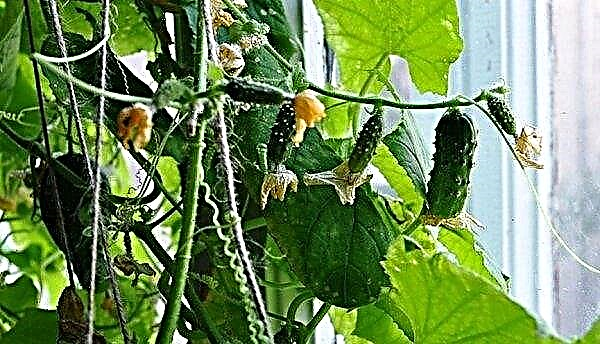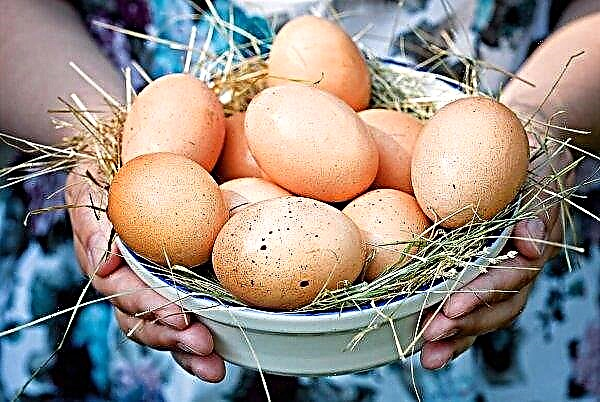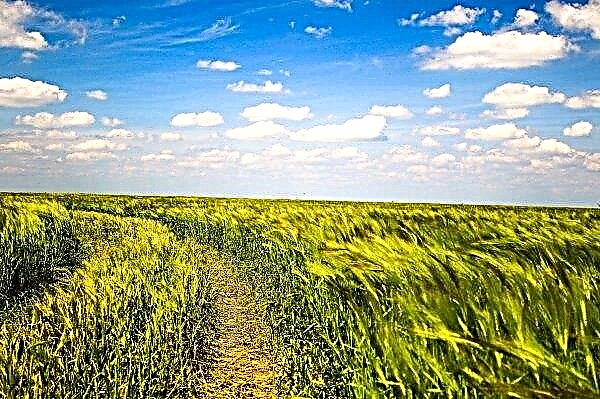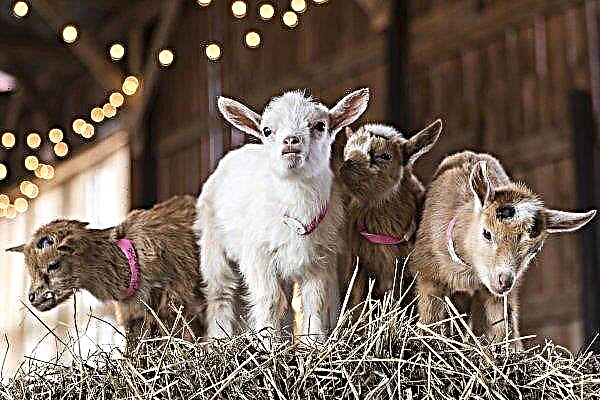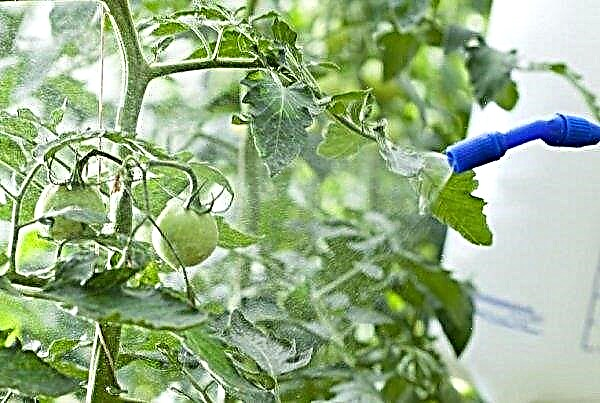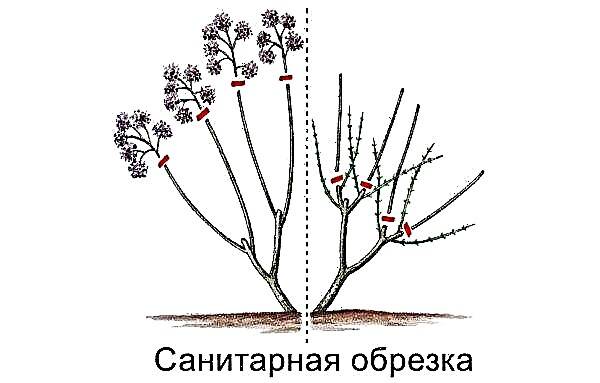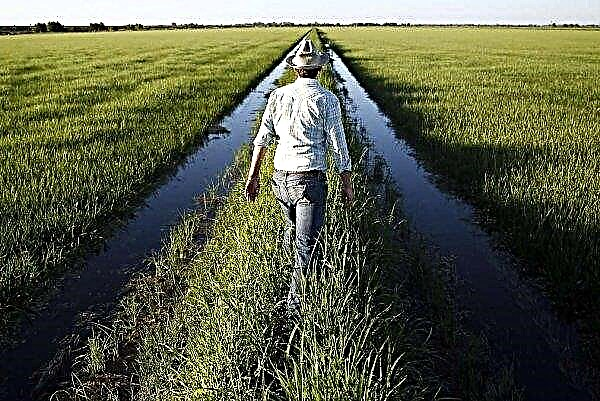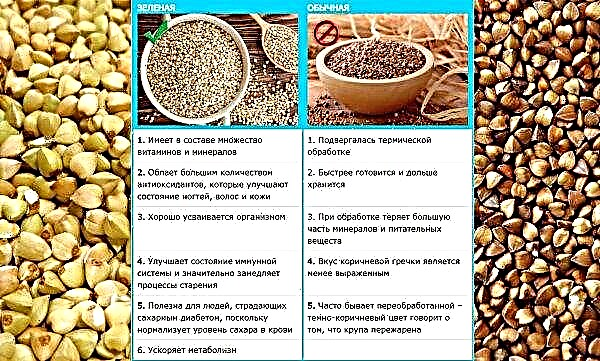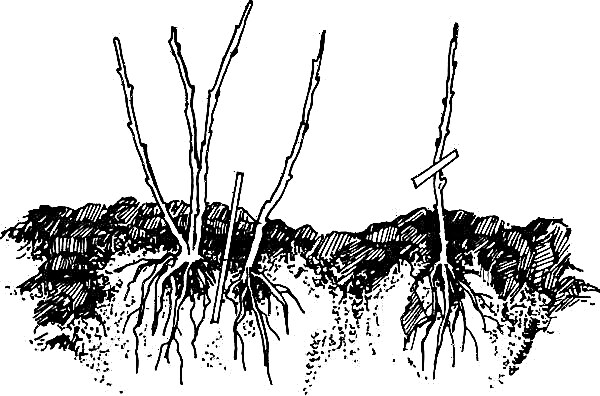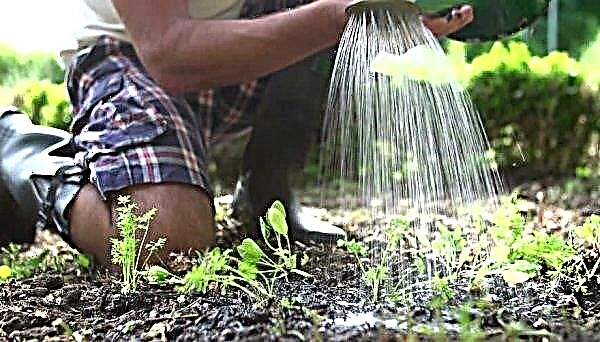Onion is one of the cultures without which it is impossible to imagine any garden. However, its cultivation is often fraught with a number of difficulties, so most gardeners are constantly in search of the optimal variety that would combine high productivity and ease of cultivation. That is what Globo onion is.
Description and characteristics of onions Globo
This view is distinguished by the following characteristics:
- high productivity (up to 10–12 kg per 1 m²);
- large onions (up to 700–900 g);
- late ripening;
- strong immunity.
 The budget option is appreciated for the ability to grow bulbs from seeds, without wasting, at the same time, for the purchase of seed
The budget option is appreciated for the ability to grow bulbs from seeds, without wasting, at the same time, for the purchase of seed
According to the technology of growing it, in one season from the seeds you can get ripe bulbs, which:
- have a wide elliptical shape;
- from the inside they consist of light juicy layers, and from the outside they are covered with golden scales;
- have a sweet taste.
Did you know? Onions are grown in 175 countries, for which this vegetable received the title of the most common in the world.
Advantages and disadvantages of the variety
- The Globo benefits include:
- suitability for cultivation in regions with different climatic conditions;
- disease resistance;
- juicy pulp;
- the absence of an acute odor characteristic of the onion;
- large-fruited.
Optimal landing times
Globo is grown in two ways: by planting seeds in the ground or by pre-growing seedlings. In the first case, onions are sown in mid-April - early May, and in the second - in March.
Preparatory work
For better germination of seeds in open ground, it is important to properly prepare for planting.
Seat selection
Onions are grown in both sunny and semi-dark places, however, he does not like lowlands. It is important to pay attention to the cultures that grew on this site in the previous season. Great if this is:
- cucumbers
- Tomatoes
- carrot.
 Globo should not be planted in the place where fresh compost was made the previous year.
Globo should not be planted in the place where fresh compost was made the previous year.
Growing conditions
Onions are classified as cold-resistant crops, because its seeds are able to germinate already at +5 ... + 7 ° С, and the higher the ambient temperature, the better for the future harvest. The optimal conditions for the formation of beautiful juicy bulbs are considered to be +20 ... + 25 ° С.
Humidity for the Globo variety is not critical, which is not the case with lighting. For the proper timely development of plantations, they need daylight hours of at least 13-14 hours. It is also important to ensure that plants are not obscured by neighboring crops or weeds.
Important! Seeds can tolerate light frosts, however, they die at a temperature of –5 ° C.
Soil requirements
Globo refers to undemanding varietiesIt grows well on non-acidic soils. However, quality drainage and regular soil aeration are important.
The site selected for planting has been prepared since the fall, fertilizing it with wood ash and compost (1 tbsp. And 0.5 buckets per 1 m²).

Preparing planting material
For best results, it is important to pre-prepare the seeds before planting. First of all, based on the size of the site where the planting is planned, it is worth calculating the required number of seeds, given that 20-25 seedlings are distributed per 1 m². For planting, fresh seed is selected not older than 1 year.
Having selected the right amount, they proceed to its processing. To prevent infections and pathogenic bacteria from harming young seedlings, you need to protect them with a 0.01% solution of boric acid. Seeds are placed in a container with this liquid for 12 hours before planting, after which they must be dried thoroughly.
Did you know? Today, scientists still cannot confidently name the homeland of onions, however, most opinions are in favor of South-West Asia.
Globo onion planting pattern
Planting seeds in open ground is as follows:
- There should be a distance of at least 30 × 25 cm between future plants. Based on this calculation, markings are made on the garden bed.
- Then they dig holes up to 2 cm deep where the seeds go down (preferably 2 per 1 hole to ensure germination).
- After the hole is sprinkled with soil, but not tamped.
- Moisten the earth slightly over the seeds.
- Then the whole onion bed is lightly sprinkled with peat.

Onion Care Features
To get a good crop, it is important to take care of onion beds after planting seeds. Especially worth paying attention to:
- Watering. It is carried out as necessary, slightly moistening the earth around the sprouted bulbs with standing water. Young plants calmly tolerate irrigation from a garden watering can or hose with a small pressure. When the onion gets stronger, it is better to water it between the rows or with the drip irrigation system, otherwise there is a risk of exposing the bulbs. The frequency of watering and the amount of water depend on the climatic conditions of the region where this onion grows. However, in any case, watering stops 3 weeks before the planned harvest.
- Fertilizer. Onions respond well to feeding with mullein or herbal infusions during the period of active growth of green mass. After it is better to do without fertilizers.
- Weeding. Weeds onion beds reduce yield by half, so it is important to keep them in order.
Important! To grow large bulbs, you can not cut feathers. The more they are, the larger the onion will be.
Novice gardeners believe that onions repel pests with their specific taste and pungent odor. This is not so, so you need to know what pests you can encounter when planting Globo.
More often onion beds can be found:
- Onion fly. These are light gray insects that look like ordinary flies. They lay eggs on onion leaves, and after that the growing larvae feed on a young plant, destroying it. To protect the plantings from onion flies will help drugs "Flies", "Medvetoks."
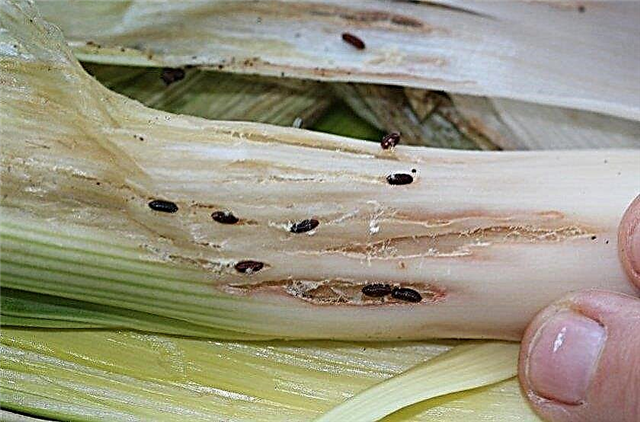
- Onion moth. Propagated by larvae that feed on the pulp of leaves, penetrating into the bulb. They fight moths with Iskra and Metaphos insecticides, as well as alternative methods, for example, ash solution (300 g ash and 40 g liquid soap per 1 liter of boiling water) or garlic infusion (mix 1: 1 garlic, ground in a meat grinder and water , and after insist for 1 week).

- Onion thrips. These insects winter in dry onion husks, and in the season they feed on juicy pulp, causing it to dry out. Not all drugs help against thrips; IOP, Aktara, Karate Zeon have shown the greatest effectiveness.

Common pests include onion weevil and nematode. They cause irreparable damage to onion plantations, almost destroying the future crop by 100%. It is difficult to bring them out, so it is better not to allow them to appear on the bed. To do this, it is enough to comply with crop rotation rules and not leave damaged or damaged bulbs on the site.
Did you know? The onion received the prefix because of the external resemblance to turnips.
Harvesting and storage
Globo is harvested in August, when its active growth stops, and the feathers begin to turn yellow.
After collecting from the garden, the bulbs are left to dry in a well-ventilated room or on the street (hiding in a shelter at night and during extreme heat). It is important to ensure that the crop is not damp, otherwise it will not be able to be stored for a long time.
Dried onions get rid of excess husks, roots and dried feathers and move to a permanent storage location.

Variety Globo will appeal to gardeners who seek to get the maximum yield, not too keen on caring for the plantings. This species has minimal requirements for soil and comfort necessary for development, so it grows well in both southern and northern regions.




